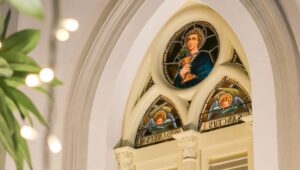Singapore’s ‘Two YMCAs’: Christianity, Colonialism, and Ethnic Fault Lines
December 25, 2022

What is Christmas like in Singapore? For the majority who are not Christian, except for bankers (keenly aware that it is an international bank holiday) or those staying in hotels, the day might very well pass you by. The MRT continues to run on a regular schedule, shops and restaurants continue to operate as normal, and the hustle and bustle of the city-state continues unabated on the 25th of December. In keeping with the Chinese majority of the island, it is only during the Chinese New Year period approximately one month later that the city will in fact shut down in a manner much closer to Christmas worldwide.
Professor Robbie Goh (SUSS Provost and NUS Department of English, Linguistics and Theatre Studies) analyses the unusual presence of two competing Young Men’s Christian Associations (YMCAs) that originally developed out of necessity, but in contemporary times have overcome their original animosity in ‘Singapore's 'Two YMCAs': Christianity, Colonialism, and Ethnic Fault Lines’ (Crossroads: An Interdisciplinary Journal of Southeast Asian Studies, 2007).
The first YMCA was established on the island in 1903 and was an institution embedded with the British colonial attitudes of the time - a recreational club that replicated the values and attitudes of the European home, insisted on and displayed the cultural superiority of Europeans, and was highly exclusionary of non-white members. The Chinese YMCA, later remained the Metropolitan YMCA in 1974, was established in 1946 by Dr Chen Su Lan (a medical doctor from Fujian Province, China, and a devout Methodist), and justified its existence with reference to the needs of the majority Chinese community in Singapore that had hitherto been neglected by the Earlier YMCA.
Prof Goh contrasts the profound English-Chinese divide between the two organisations that was evident in the years 1946 to 1968, with the greater cooperation and less identifiable differences of the period thereafter. The Chinese YMCA’s initial Chinese rules and organizational structure were vastly different to the more Anglophone middle-class operations of the previous YMCA. However, with the changing leadership of the Chinese YMCA from Dr Chen Su Lan to Dr Gwee Ah Leng in 1968, both associations were brought under the umbrella of the National Council of YMCAs in Singapore in 1970 and continue to exist in parallel with appreciably less hostility and rivalry.
Christianity has been and remains a major religion within Singapore, with approximately 15% of the population professing to be Christian according to the 2000 census. The continuing existence of two YMCAs on the island highlights the unity of religion, in the shared beliefs of its followers, with the cultural-racial fault lines that persist in dividing Christian communities on the island.
Read the full article here.
